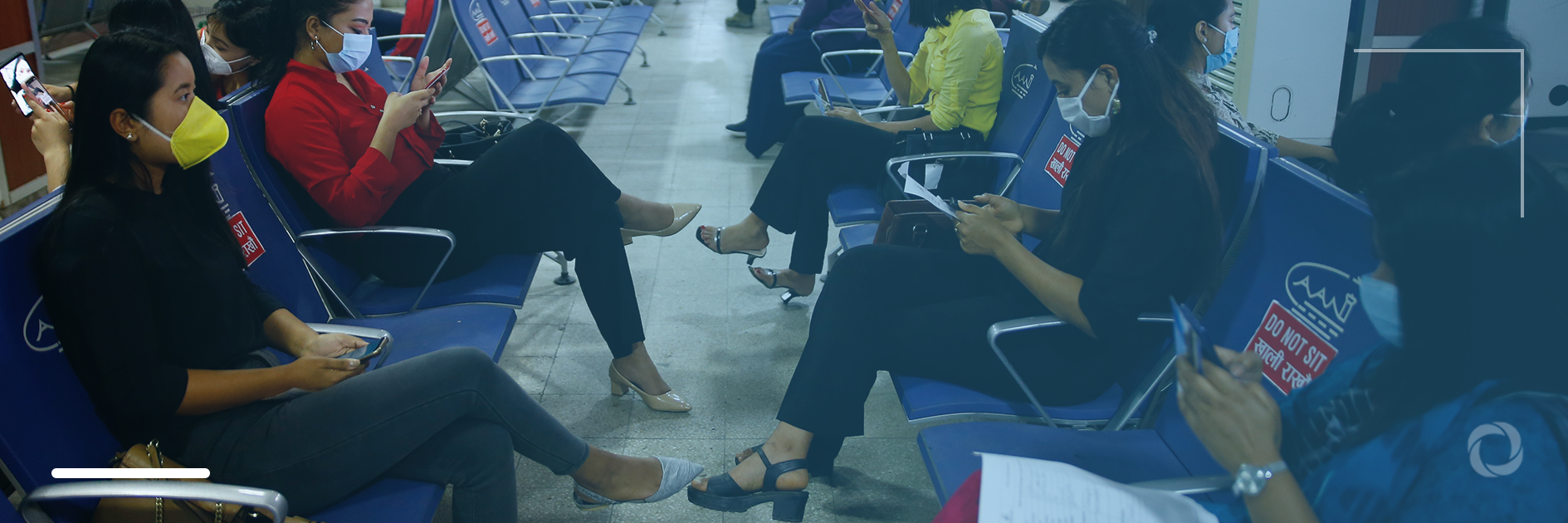At a time when COVID-19 infection rates have reached an alarming level in Nepal with patients struggling hard to find hospital beds across the country, the Ministry of Health and Population (MoHP) of Nepal has warned that the country’s health infrastructure is unlikely to be able to address the terrifying rate of infection.
Issuing a notice on April 30, Dr. Samir Kumar Adhikari, joint spokesperson at the MoHP said, “As COVID-19 infection in Nepal is increasing terribly, our existing health infrastructure is unlike to address this dreadful rate of COVID-19 infection.” Adding that people must be sensitive towards the situation and strictly adhere to health guidelines, it would be almost impossible for hospitals to be able to provide beds to coronavirus patients across 22 of the hardest-hit districts of Nepal, he warned.

In addition to prohibiting all forms of travel, tourism, public movement, and crowds, the MoHP has urged people to wear face masks, maintain physical distance and wash their hands with soap from time to time.
As per the MoHP notice, hospitals in Kathmandu, Bhaktapur, Lalitpur, Morang, Sunsari, Jhapa, Parsa, Bara, Dhanusha, Chitwan, Makawanpur, Kavrepalanchowk, Kaski, Dang, Banke, Rupandehi, Palpa, Bardiya, Kapilvastu, Surkhet, Kailali, and Kanchanpur districts of Nepal can no longer cope with the inflow of COVID patients.
Meanwhile, experts and activists have voiced their concerns over the government’s failure to address the problem. Dr. Savana Pradhan, an advocate, and obstetrician-gynecologist has demanded the immediate opening of the newly constructed building at Bir Hospital, Nepal’s oldest and busiest hospital.
Upset about the current state of health service mismanagement, Dr. Prahdan urged, “We need to give pressure to authorities to bring into function the building for COVID-19 patients without further delay.” She questioned how the authorities can be so uncaring when people are dying and when many more will die needlessly.

Equipped with an ICU and a system to continue surgical operations in post-disaster emergencies, the new three-storey building at Bir Hospital was inaugurated by Prime Minister KP Sharma Oli on 12 July 2019. The hospital building has not yet been in use with the lack of human resources being cited as the reason for this.
- According to the MoHP, 7,428 people were confirmed as having COVID-19 across the country in the last 24 hours
- As many as 37 people lost their lives in this period
- The total number of infections has reached 343,418, of whom 286,015 have recovered
- A total of 2,021 people have been discharged
- The COVID-19 death toll has reached 3,362
- The total active COVID-19 cases stands at 54,041
- All domestics flights have been suspended from midnight on May 3 and all international flights, except two flights per week from New Delhi, India, will be suspended between 6 to 14 May
At a time when the number of infections is increasing day by day in Nepal, neighboring India, where the number of coronavirus infections has skyrocketed in recent days, is unlikely to provide vaccines to neighboring countries including Nepal, Bangladesh, and Sri Lanka before July.
Authorizing district crisis management centers to decide on the extent of restrictive measures to break the chain of rapidly increasing cases of COVID-19, the Government of Nepal imposed a 15-day long COVID-19 prohibitory order on April 29.
Meanwhile, in a special address to the nation on May 3, Prime Minister KP Sharma Oli announced that the Nepali Army has been instructed to construct a 1,000 bedded coronavirus treatment hospital

